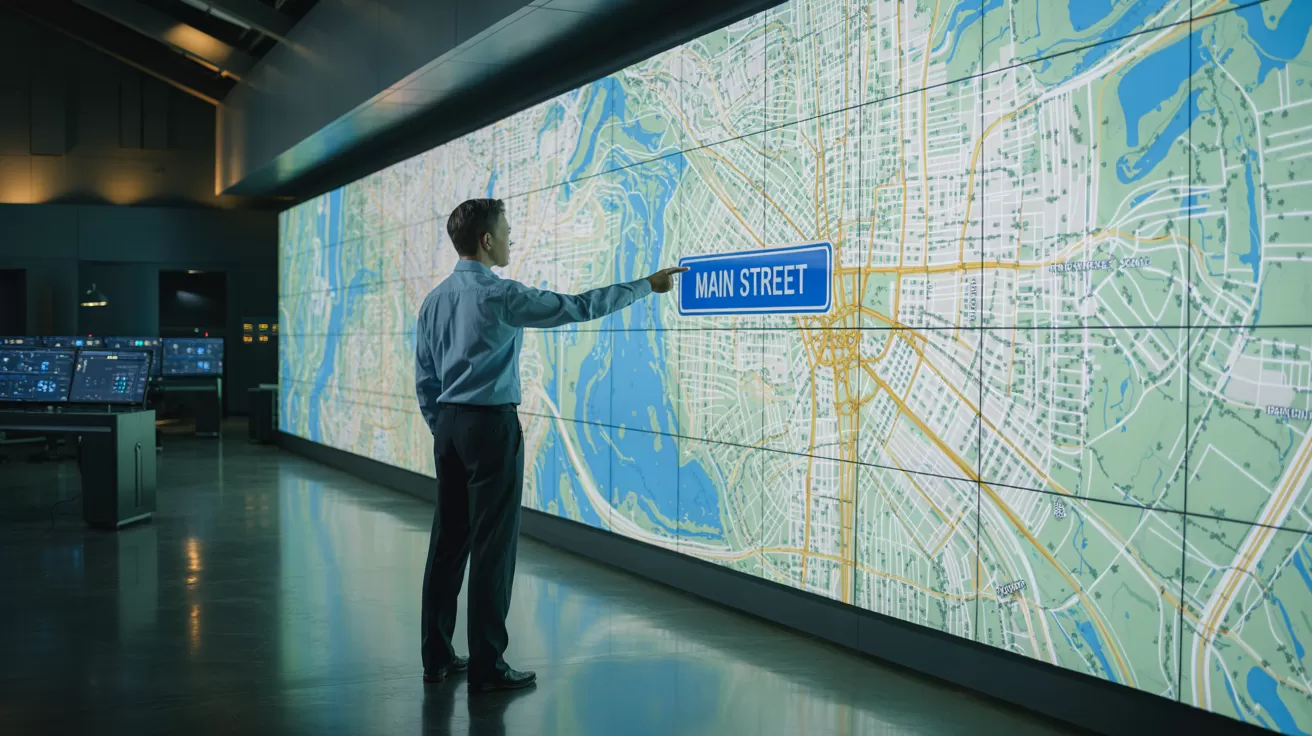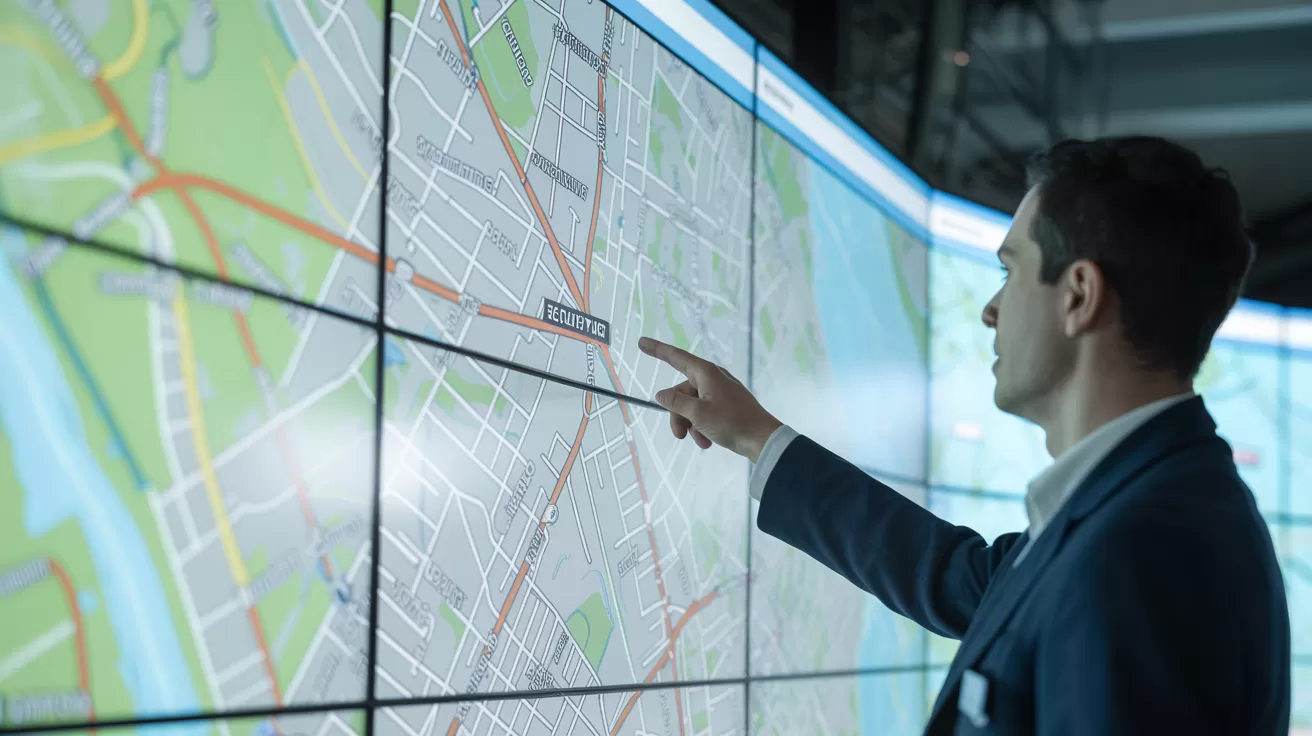Traffic centers are flooded with data. Missing one critical alert can cause chaos. Smart video walls1 turn this data deluge into clear, actionable intel for your team.
During a crisis, scattered data on multiple small screens can confuse and lead to delayed reactions. A single missed alert could mean the difference between a controlled response and a catastrophe.
Advanced video walls are a lifeline for Emergency Response Centers (ERCs) because they consolidate dozens of critical data streams into a single, clear visual hub. This provides a unified operational picture, enabling faster, more coordinated, and more effective crisis management decisions.**

Throughout my entire career as an engineer, I have been driven by one core principle: technology must be reliable, especially when the stakes are high. In an Emergency Response Center, there is no higher stake. I've consulted on command center designs where operators were forced to swivel between six or eight different monitors to track a single incident. This setup isn't just inefficient; it's dangerous. It creates information silos and increases the chance of human error. This is why at iSEMC, we are so focused on creating a central, unified display. In crisis management, the video wall isn't just a screen—it's the central nervous system of the entire operation.
How Can a Video Wall Tame Information Overload in a Crisis?
In an emergency, information comes from everywhere at once. You're drowning in video feeds, maps, and alerts, making it impossible to see the big picture on small, separate screens.
A video wall system uses a powerful processor to capture, scale, and arrange countless information sources into a single, cohesive display. This creates a Common Operational Picture (COP), enabling commanders to view all relevant data in one place, organized for maximum comprehension.

For a lead project engineer designing a new ERC, the primary challenge is effectively managing information. It's not about a lack of data, but an overwhelming abundance of it. The solution isn't more monitors; it's a more innovative way to display the information you have. The "brain" of the video wall, the processor, is what makes this possible. It's a piece of hardware specifically designed to handle the chaos of an emergency and present it as a clear, actionable picture. This technology transforms a wall of confusing data into a powerful tool for situational awareness2.
Creating the Common Operational Picture (COP)
A Common Operational Picture3 is the holy grail of emergency management4. It ensures that everyone in the room, from the dispatcher to the incident commander, is working from the same set of facts. A video wall processor5 makes this a reality by integrating disparate sources. You can dedicate different zones of the wall to various types of information, but all are visible to everyone, fostering a shared understanding of the evolving situation.
The Power of the Processor
The video wall itself is the canvas, but the processor is the artist. It ingests every type of signal imaginable—from live drone feeds and IP security cameras to GIS mapping systems and television news broadcasts. It then allows operators to place these sources anywhere on the wall, at any size, in real-time. This flexibility is critical. As a crisis evolves, the most essential information changes from minute to minute. An operator needs the ability to instantly bring the most crucial feed to the forefront so that everyone can see it.
What Guarantees Display Uptime When a Crisis Never Sleeps?
An ERC operates 24/7/365. The terrifying thought is that your primary display could go black during a major earthquake or a city-wide power outage, leaving your team completely in the dark.
Professional-grade LED video walls are engineered for absolute reliability, featuring full system redundancy. Dual power supplies and dual signal paths ensure that if any single component fails, a backup system takes over instantly with zero downtime, guaranteeing the screen stays on.**

The foundational principle of iSEMC is building systems that do not fail. For an ERC, this is not a luxury; it is a fundamental requirement. You cannot have a single point of failure in your primary visual command tool6. When we design a video wall for a mission-critical environment, we build it on a foundation of redundancy7. This means considering every potential point of failure—from the power cord to the signal cable—and engineering a backup for each. This approach ensures the video wall is as resilient as the team that depends on it.
The N+1 Redundancy Model
This engineering philosophy is often referred to as "N+1" redundancy7. It means that for 'N' components required for the system to run, we include at least one extra (+1) as an automatic, seamless backup.
Power Supply Redundancy
Each section of the video wall is powered by at least two independent power supply units (PSUs). They share the load during regular operation. If one PSU fails, the other immediately takes on 100% of the load without any noticeable impact on the screen. The system simultaneously alerts maintenance staff that a PSU needs replacement.
Signal Path Redundancy
The video signal is delivered to the wall via two separate pathways. If a cable is accidentally cut or a signal sending card fails, the video wall automatically switches to the secondary path, preserving the image on the screen.
Maintenance Without Downtime
This redundant architecture enables hot-swappable maintenance. A technician can physically remove and replace a faulty power supply, LED module, or receiver card while the rest of the display continues to operate normally. For a center that can never shut down, this is a non-negotiable requirement. It enables routine service and unexpected repairs without compromising the operational readiness of the command center.
Can Operators Truly See the Details That Matter on a Large-Scale Display?
You have a massive video wall, but if street names on a map are fuzzy or a license plate in a video feed is unreadable, the size of the wall is irrelevant and even counterproductive.
Yes. Modern fine-pixel pitch LED technology provides a pixel density high enough to ensure that even on a massive wall, text is razor-sharp and images are crystal clear. This allows operators to analyze fine details accurately, whether they are across the room or standing right in front of the screen.

As an engineer, the progress in pixel density8 is one of the most impactful advancements for control rooms. In the past, there was a trade-off between size and clarity. A big screen meant a blurry image up close. That is no longer the case. Fine-pitch LED technology enables us to create enormous, seamless digital canvases with the same clarity as a desktop monitor. For an ERC, this means you can display a sprawling city map, and an operator can walk right up to it and read the smallest street label without any pixelation.
The Physics of Pixel Pitch
Pixel pitch—the distance between individual LEDs—is the key metric here. A smaller pitch means more pixels per square meter, resulting in a higher-resolution image. For an ERC, where operators need to view the wall from various distances, a fine pitch (typically 1.5mm or less) is crucial. It ensures the image is sharp for the commander viewing from the back of the room and for the operator analyzing data up close.
Brightness, Contrast, and Color for Critical Analysis
Visual clarity isn't just about resolution; it's also about contrast.
High Contrast
In aerial footage or security feeds, the ability to see details in dark shadows is vital. LED's ability to produce true, deep blacks provides a superior contrast ratio, making these critical details visible.
Color Accuracy
When analyzing complex GIS maps, different colors represent different data layers (e.g., utility lines, flood zones, population density). Accurate and uniform color reproduction across the entire wall is essential for correct interpretation.
Adjustable Brightness
An ERC is often a low-light environment to reduce operator eye strain. A video wall must be able to operate at a very low brightness level without losing color quality, a feature where high-end LEDs excel compared to many other technologies.
How Do Crisis Displays Foster Real-Time Team Collaboration?
In a traditional setup, different agency teams huddle around their own small monitors. This creates communication barriers and slows down the coordinated response that is essential in a crisis.
A large, central video wall breaks down these information silos. It serves as a single source of truth, ensuring that every team member, from law enforcement to medical services, views the same real-time data. This shared perspective fosters immediate collaboration and unified decision-making.

One of the most powerful functions of a video wall in an ERC is its ability to bring people together. I have seen it transform the dynamic of a room. Instead of teams turning their backs on each other to focus on their own terminals, they all turn towards the central display. It becomes the room's natural focal point for discussion and strategy. When the police, fire department, and public works representatives are all pointing to the same map on the same screen, they are literally on the same page. This shared situational awareness2 is the bedrock of effective multi-agency response.
Zoned Content for Multiple Teams
A modern video wall is not a single, monolithic screen. Using the video processor, it can be divided into multiple "zones," each dedicated to a specific team or function, all while displayed on one cohesive surface.
Zone 1: Police
Police can view live feeds from street cameras to track a situation.
Zone 2: Fire Department
The fire department can have a GIS map displayed showing hydrant locations and building blueprints.
Zone 3: Emergency Medical Services
Emergency medical services can monitor ambulance status and hospital capacity in real-time.
Main Zone
A large, central portion of the wall can display the overall incident map, visible to everyone.
This approach provides each team with the specific information they need while maintaining a clear overall operational picture, facilitating effective inter-agency communication.
Interactive Control and Data Sharing
These systems can be further enhanced to be even more collaborative. With touch-screen overlays or integration with third-party control systems, designated leaders can walk up to the wall and interact with the data directly—zooming into maps, re-routing assets, or highlighting areas of concern for their teams. Operators can also be given permissions to push content from their individual workstations onto the main video wall, allowing them to instantly share a critical piece of information with the entire room.
Conclusion
In crisis management, every second and every piece of information counts. An advanced LED video wall is the one tool that unifies data, guarantees uptime, and fosters seamless collaboration.
Footnotes
- Explore how Smart video walls enhance data visualization and decision-making in traffic management centers. ↩
- Understand the concept of situational awareness and its role in crisis response. ↩
- Understand the importance of a Common Operational Picture for effective crisis response. ↩
- Learn about the essential principles that guide successful emergency management. ↩
- Find out how video wall processors enhance data visualization in crisis management. ↩
- Understand the significance of visual command tools in managing emergencies. ↩
- Learn about the importance of redundancy in ensuring system reliability during crises. ↩
- Understand how pixel density impacts the clarity of information displayed in crises. ↩





